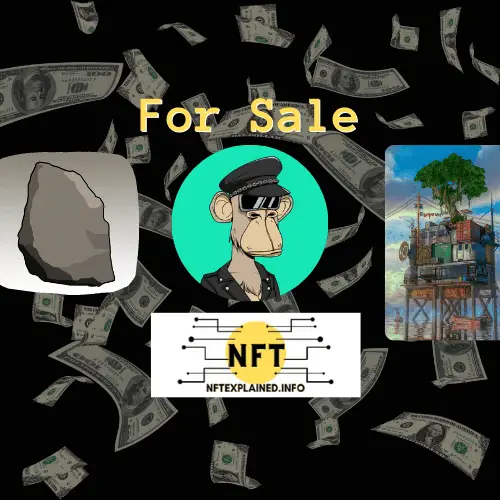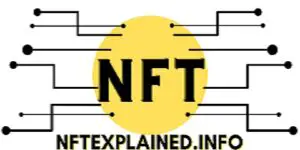
NFTexplained.info is a team of long term crypto investors who are well versed in the NFT space. In this article we will complete a deep dive regarding the selling of NFTs.
When it comes to NFTs, many people have the misconception that making or trading NFTs will be an easy way to make money. NFTexplained.info will help you evaluate if this is the case.
To create an NFT, a digital wallet like MetaMask must be connected to an NFT marketplace like OpenSea. Some marketplaces like OpenSea use lazy minting which means you won’t be required to pay the cost of ‘minting’ or tokenizing the digital work on the blockchain – meaning no gas fees are incurred.
Minting or tokenizing a digital asset on the blockchain can be costly and can even make the process of selling NFTs unprofitable. This is something our team will dive into later on in this article.
The first step in selling an NFT is creating a wallet that can be connected to an NFT marketplace. Our team would recommend using MetaMask because of its simplicity. We have a full article covering what MetaMask is and how to set it up; that is linked here.
The second step is creating an account on a marketplace like OpenSea; OpenSea will allow you to list your NFT. Our team also has a full article covering how to use OpenSea, which is linked here.
After both of these steps are completed you will be in a position to begin creating and selling NFTs.
Is There A Market For NFTs?
Any artist who may be looking to make their passion for art a full time job will obviously have to ask the question: is there a market for this new medium?
As a general statement, there is an enormous market for NFTs and the space continues to grow at an astonishing rate. Experts have predicted that the market cap for NFTs will be US $80 billion by 2025.
Even with the barriers to understanding the space, NFTs continue to onboard new members each and every day. OpenSea, the largest NFT marketplace, continues to break the number of active users on their platform on a regular basis.
The underlying technology that supports NFT is groundbreaking and being able to have full ownership of a digital item is something that was previously not readily available. Thanks to the blockchain there is a wide array of new opportunities, especially for artists looking to create innovative digital works.
Can Anyone Make And Sell NFTs?
Once a digital wallet is connected to an NFT marketplace, it is possible to begin selling NFTs. While anyone can create an NFT, it is unlikely to be sold as a result of simply listing it. Similar to other products, there needs to be demand or a purchasing incentive for a sale to occur.
NFTs are digital assets that allow for verifiable ownership via the blockchain. NFTs can come in the form of JPG, Mp4, GIF, and more. While evaluating art is often very subjective, it is a good idea to practice and start to perfect your NFT craft.
In order to sell NFTs, the path most likely to result in success would be to choose a specific niche within the NFT market (i.e. animated art or music NFTs). After you become familiar with the value and quality of work that people are willing to purchase, it is a best practice to begin marketing yourself and your work as a brand.
NFT artists often market their work on social media platforms, especially Twitter. Speaking of Twitter, the team at NFTexplained.info is dedicated to keeping you up to date and we recommend following us on there to keep informed.
As a general statement, it is possible for smaller artists to sell their NFTs, especially taking into consideration that affluent people (i.e. whales) are looking to support them in this space.
As with most products, NFTs are driven by supply and demand economics; making sure people are aware of your work/product is a crucial step. Smaller artists can often grow their brand by doing giveaways and interacting with people via social media.
The business saying that an overnight success can only occur when that person has put in years of hard work is a truism, in almost all elements of life, including the NFT space. A prime example of this is Beeple – a digital artist many people would now consider to be a blue chip NFT artist.
An illustrative example of this is Beeples piece, “Everydays: the First 5000 Days” which sold for US $69 million. The piece is a combination of thousands or artworks that have been combined. For many people not following digital artists, this staggering success came out of the blue. But it is critical to note that Beeple had been creating digital art every single day for close to fourteen years before the sale had occurred.
Is It Hard To Sell NFTs?
As a general statement, it is not easy to sell NFTs. While people, often crypto whales, do occasionally look to support emerging artists, it can still be a challenging process. The NFT space is growing at an astounding rate but so are the number of people looking to make a profit.
As our team previously mentioned, simply listing your NFT on a marketplace is incredibly unlikely to result in a sale. Taking further steps like establishing your credibility as an artist will undoubtedly help in this process.
The physical art world acts similarly to specific niches within the NFT market. A real world example of this can be thought of the ease in which Andy Warhol’s estate would have in selling a piece in comparison to Joe, an average artist, who most potential buyers are unfamiliar with.
The NFT space is not a gold mine where it will be easy to make immense profits. The NFT space can be thought of as a new medium for artists to express themselves; one in which sellers can connect directly with buyers without any intermediaries.
How Can I Successfully Sell NFTs?
NFTs only sell if there is demand; demand can be created in many ways including establishing yourself as a talented artist or having a powerful story. It is a good idea to market yourself and your product, and to convey ways in which the NFT will bring value to the purchaser.
Taking the purchaser’s perspective is highly beneficial. If the artwork is not backed by an artist who is engaged with their followers and supporters, it is unlikely for NFT sales to occur.
Finding the type of NFT (or the specific niche within the NFT space) you would like to work in is a key step.
Those looking to sell a profile collection would likely take a different approach than those looking to sell one of one pieces. Collections, which may have as many as 10,000 different pieces, often take a full team working on the project full time to drive success. The same goes for artists in the space – however it’s possible that sales occur without the backing of a full team.
If you are just starting to learn about NFTs, it is a good idea to begin familiarizing yourself with people in the space, commonly used terms, and how the market works. Start to explore different NFT marketplaces and begin researching successful digital artists like: FEWOCiOUS, Mad Dog Jones, and Beeple amongst many others.
A great tip the team at NFTexplained.info has is to reach out to other emerging artists or people in this space. Since most people are relatively new, it’s likely that they will be willing to – at a minimum – take the time to respond.
It is important to realize that there are little to no communication boundaries and reaching out to people has no consequences. Artists and other actors in this space often spend time on Discord as well as Twitter; we would recommend promoting your project(s) in those digital distribution platforms as well as making connections which may allow you to work together.
We hope you are just as excited as we are and continue to stay informed at NFTexplained.info. To get the latest news in this rapidly evolving space, follow our team on Instagram & Twitter!
